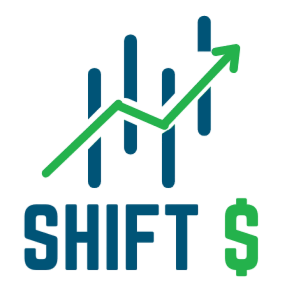- About Us
- Expertise Zone
- Success Stories
- Analytics Solution – Investment Bank
- Customer 360 – Retailer
- Data Lineage – Trading Exchange
- Data Quality – Financial Organization
- Leveraging Financial Information – Generative AI
- Data Privacy Program – Financial Organization
- Digital Transformation – Mobility Support
- Digital Transformation – Healthcare
- Work With Us
- Succeed Together
- 250 Main Street, 2nd Floor, USA
- support@example.com
- About Us
- Expertise Zone
- Success Stories
- Analytics Solution – Investment Bank
- Customer 360 – Retailer
- Data Lineage – Trading Exchange
- Data Quality – Financial Organization
- Leveraging Financial Information – Generative AI
- Data Privacy Program – Financial Organization
- Digital Transformation – Mobility Support
- Digital Transformation – Healthcare
- Work With Us
- Succeed Together
Information Systems ROI
Return on Investment in Business Information System Management
Return on Investment (ROI) in the context of business information system management refers to the measurable value generated from investments in systems like transactional systems, master data management (MDM), data analytics, data quality, metadata management, data integration, AI/ML, and enterprise data modeling. These systems enable organizations to streamline operations, improve decision-making, and drive innovation. For example:
- Transactional Systems: ROI can be measured through reduced processing times, fewer errors, and improved customer satisfaction.
- Master Data Management: ROI is seen in better data consistency, reduced duplication, and enhanced operational efficiency.
- Data Analytics: ROI is reflected in faster, more accurate insights that drive revenue growth and cost savings.
- Data Quality: ROI is measured by reduced error-related costs, improved compliance, and better decision-making.
- Metadata Management: ROI is evident in improved data discoverability, reduced search times, and enhanced collaboration.
- Data Integration: ROI is achieved through seamless data flow across systems, enabling realtime insights and reducing manual effort.
- AI/ML: ROI is realized through automation, predictive analytics, and personalized customer experiences, driving efficiency and innovation.
- Enterprise Data Modeling: ROI is achieved through scalable systems, reduced development costs, and faster time-to-market for new initiatives.
To measure ROI, organizations can track metrics such as cost savings, revenue growth, time savings, error reduction, and compliance improvements. For instance, quantifying the reduction in data storage costs or the increase in customer retention rates directly links these systems to tangible business outcomes.
Linking ROI to Sound Data Governance Practices
Sound data governance practices are the backbone of maximizing ROI from business information systems. By establishing clear policies, standards, and accountability, data governance ensures that systems like MDM, data analytics, and data quality operate efficiently and effectively. For example:
- Data Quality: Governance ensures data is accurate and consistent, reducing errors and improving decision-making.
- Master Data Management: Governance provides a single source of truth, eliminating silos and enhancing operational efficiency.
- Metadata Management: Governance ensures metadata is well-documented and accessible, improving data discoverability and usability.
- Enterprise Data Modeling: Governance ensures models align with business goals, supporting scalability and adaptability.
By embedding governance into these systems, organizations can measure ROI through improved system performance, reduced operational costs, and enhanced business outcomes. For instance, a governance framework that enforces data quality rules can directly reduce error-related costs, while a well-governed MDM system can improve customer insights and drive revenue growth.
Tailored Data Governance Methodology
In business terms, data governance is the framework of policies, processes, and roles that ensure data is managed as a strategic asset. It ensures data is accurate, secure, consistent, and usable, enabling better decision-making and operational efficiency. The governance model can be tailored to the size and structure of a company:
- Centralized Model: Suitable for small to mid-sized organizations, where a single team oversees all data governance activities. This ensures consistency and control but may lack flexibility.
- Decentralized Model: Ideal for larger organizations with diverse business units, where each unit manages its own data governance. This offers flexibility but can lead to inconsistencies.
- Federated Model: A hybrid approach that balances central oversight with local autonomy. This is often the best fit for large, complex organizations, as it ensures alignment with business goals while allowing for adaptability.
Regardless of the model, the key is to align governance practices with the organization’s size, structure, and strategic objectives.
Components of a Data Governance Programme
A comprehensive data governance programme consists of several key components:
- Data Policies and Standards: Defines rules for data management, including quality, security, and usage.
- Data Ownership and Stewardship: Assigns accountability for data assets to specific individuals or teams.
- Data Quality Management: Ensures data is accurate, complete, and consistent through processes like cleansing and validation.
- Metadata Management: Captures and manages metadata to provide context and improve data discoverability.
- Data Security and Privacy: Protects data from unauthorized access and ensures compliance with regulations.
- Data Architecture: Designs the structure and flow of data to support scalability and integration.
- Metrics and Monitoring: Tracks data quality, compliance, and governance effectiveness through measurable KPIs.
- Change Management: Prepares the organization for cultural and operational shifts required to adopt governance practices.
- Training and Communication: Promotes data literacy and ensures stakeholders understand the value of governance.
These components work together to create a robust framework that ensures data is managed as a strategic asset, driving business value and enabling long-term success.
The Most Common Challenges in a DG Program

Our Unique Approach
Data governance is not just about tools and technology; it’s about identifying key stakeholders and establishing a framework of accountabilities, policies, standards, and procedures to unlock the full value of the information a company holds across its various repositories. We understand the nuances of this framework and can help you succeed in bringing it to life.

